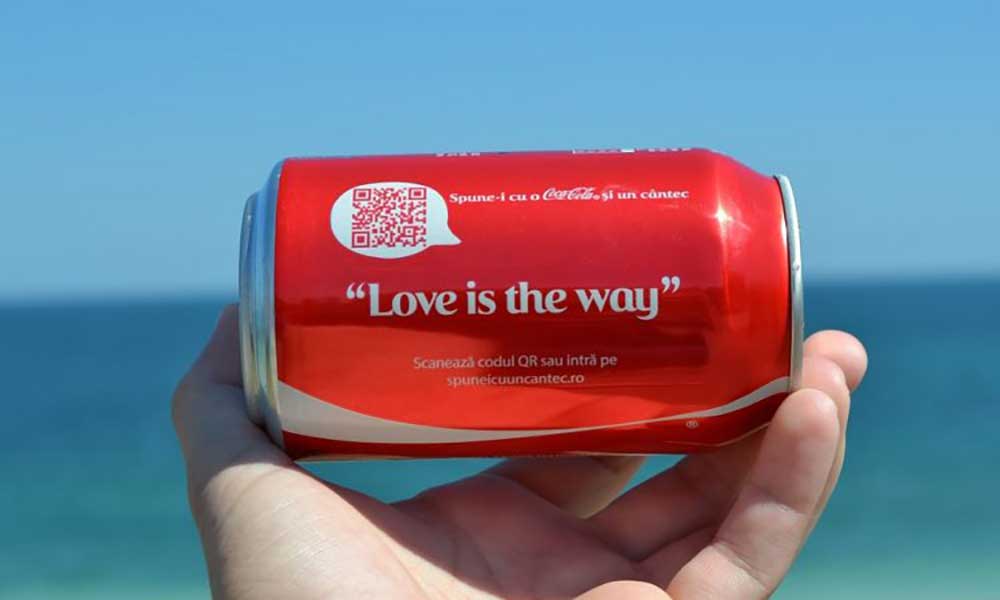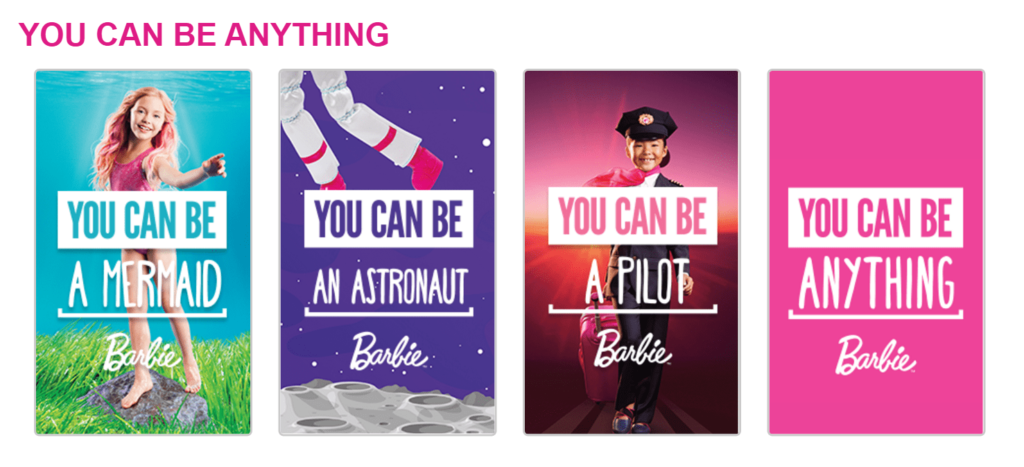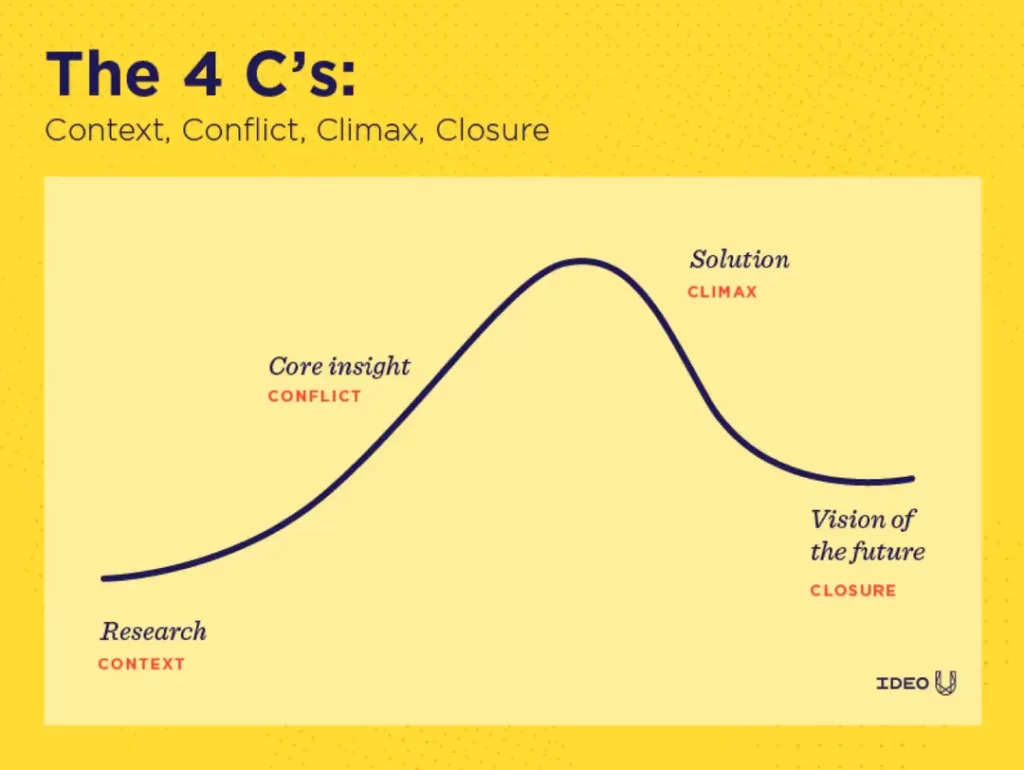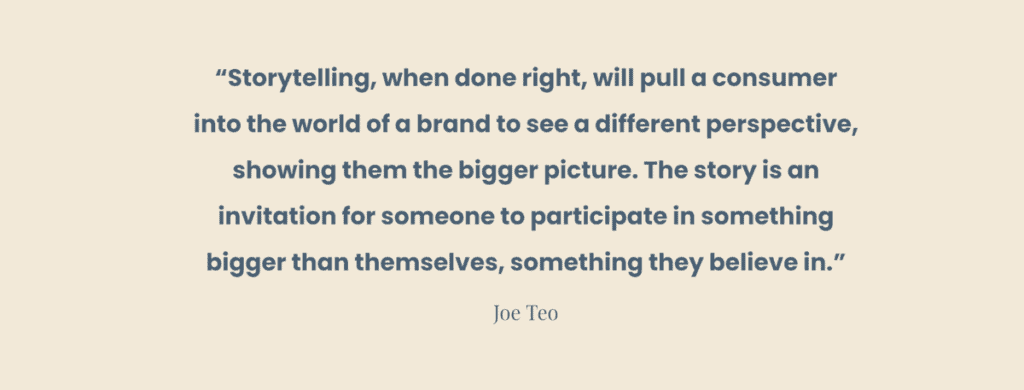The Ultimate Guide to Storytelling in Marketing
Storytelling in marketing is a powerful tool to engage audiences. It allows brands to create an emotional connection with their customers. This drives loyalty and sales. Narratives and anecdotes help to communicate brand values.
Authenticity is vital when it comes to storytelling. Genuine stories and experiences make customers inclined to connect with brands. Showcasing real-life examples of positive impacts builds trust.
Visual elements are necessary for storytelling. Videos, images, and graphics can enhance the experience. They evoke emotions and create lasting impressions.
Personalisation is effective in storytelling. Tailor stories to specific segments of your target audience. Acknowledge their unique needs, challenges, or aspirations. This establishes a deeper connection.
Differentiate your brand with storytelling. Highlight your unique selling points. Craft narratives that emphasise what sets you apart. This attracts attention and generates interest.
Table of Contents
Importance of storytelling in marketing

Storytelling is critical in marketing. It captures people's attention and creates an emotional bond. Narrative techniques help brands communicate their values and draw in customers.
Storytelling makes brands stand out from competitors. It offers a relatable, human approach which resonates with people more than facts and figures. Plus, stories evoke emotions and leave a lasting impression. When people emotionally connect to a story, they form positive associations and become loyal to the brand.
The “One for One” campaign from TOMS Shoes is a great example. Blake Mycoskie, the founder, shared the touching story of meeting children without shoes while on a trip to Argentina. This inspired him to launch TOMS Shoes and pledge to give children in need a pair of shoes for every pair sold. This story enabled TOMS Shoes to effectively communicate its mission and build a devoted community.
The power of storytelling
To engage your audience, build brand identity, and retain customers, harness the power of storytelling. Through emotional connection, you can create a lasting impact. Building brand identity helps establish a unique voice for your business. Use storytelling to engage customers and keep them coming back for more.
Emotional connection with the audience

Storytelling has a fantastic power to create an emotional bond with the audience. Through fascinating stories and relatable characters, it can touch hearts and minds. It can evoke emotions like empathy, joy, sadness or even inspiration. This makes storytelling unique compared to other forms of communication.
Facts and data can provide information but can't make a lasting impression. Stories, however, can engage people’s emotions. They make the audience feel invested in the narrative, making a lasting impact.
Furthermore, stories break down barriers and build bridges between individuals or groups. They transcend cultural boundaries and enable people from diverse backgrounds to find common ground. This connection leads to increased understanding, tolerance and even social change.
Malala Yousafzai’s story is one example of the power of storytelling to form emotional relationships. She was a young girl advocating for girls’ education in Pakistan despite Taliban opposition. Millions worldwide were moved by her story and felt connected to her cause. It resonated with their own beliefs about equality and justice.
Building brand identity
Create a unique visual identity! Employ logos, colours, and typography for consistency. And develop a brand personality that resonates with your business's values and characteristics.
Craft a dynamic brand story to engage with your customers. This builds loyalty and helps your message reach across all marketing channels.
Storytelling is key! Connect with your audience through stories that convey your brand's mission and values. It will build an emotional bond beyond advertising and create a sense of trust.
Remember: Building a strong brand identity takes time and dedication. Embrace your core values and continue telling compelling stories your audience can relate to.
Engaging and retaining customers:
Focus on personalisation! Tailor products and services to meet individuals' needs and preferences. Offer customised recommendations, personalised offers, and even an account manager.
Create an emotional connection! Use storytelling to engage customers. Craft narratives that match their values and aspirations. Inspire with success stories, customer testimonials, and social impact initiatives.
Deliver exceptional service! It's not just about resolving issues. Make each customer interaction a memorable experience. Go the extra mile. Be proactive. Build trust.
Maintain communication! Reach out to customers regularly. Show you value their relationship. Tell them about email newsletters, social media updates, and upcoming offerings.
Uniquely understand each customer to provide personalised experiences. For centuries, storytelling has captivated audiences and shared knowledge. Brands can harness this technique, too. Share authentic tales that resonate with customers. Tap into the emotional aspect and foster loyalty.
Elements of compelling storytelling in marketing

To effectively engage your audience in marketing, master the art of storytelling with the correct elements. Dive into the protagonist and conflict, explore the narrative structure, and harness the power of visuals and multimedia. Discover how these components contribute to captivating and persuasive marketing narratives.
The protagonist and conflict
The protagonist is the story's hero – one people can relate to. Conflict is vital for creating tension and keeping audiences engaged. It can be something like internal struggles or clashes with other characters. Marketers can build trust and loyalty by highlighting conflicts that matter to target consumers.
This element can inspire audiences to take action when they see how the protagonist overcomes challenges. It can show the benefits of a product or service.
To do this effectively:
- Make protagonists that resemble your target audience.
- Start the narrative with conflict to grab attention.
- Show the product or service solving conflict.
- Use emotional appeals to make people connect with the story.
These suggestions work because they tap into emotions and experiences. People care more about the outcome when they see themselves as the protagonist. By resolving people's conflicts, marketers can show how their offerings are helpful.
Narrative structure
Let's look at the key components of narrative structure in a table:
| Component | Description |
| Exposition | Introduces characters, setting, and background info. |
| Rising Action | Builds conflict and tension. Creates anticipation. |
| Climax | Turning point of the story. Most intense moment. |
| Falling Action | Resolves the conflict and eases stress. |
| Resolution | Closes the story. Provides closure to the audience. |
This structure enables marketers to craft a story that engages their target audience and builds emotional connections with them. This leads to increased brand loyalty. History has seen many successful campaigns that make use of narrative structure. Apple's iconic “1984” advertisement during Super Bowl XVIII is a prime example. It used a narrative inspired by George Orwell's novel and drew global attention and curiosity.

Use of visuals and multimedia
Visuals and multimedia are vital in telling a story in marketing. They can draw in the audience and deliver messages in ways words can't. Including visuals and multimedia has more impact on your marketing campaigns.
Examples:
- Infographics – Make complex info easier to understand.
- Videos – Engage viewers & create a connection to your brand.
- Images – Grab attention in the sea of content.
- Interactive – Increase engagement & participation.
Using visuals and multimedia also improves brand memorability. People remember visuals more than words. Incorporating visuals into marketing materials can help make a lasting impression on the target audience.
Pro Tip: Ensure visuals and multimedia align with your brand identity and message. Consistency is vital to maintain a strong brand image.
Leverage visuals and multimedia to create stories that your audience can relate to. So, use visuals and multimedia when crafting your next marketing campaign!
Examples of successful storytelling in marketing campaigns
To illustrate successful storytelling in marketing campaigns, explore examples such as Nike's “Just Do It” campaign, Coca-Cola's “Share a Coke” campaign, and Airbnb's “Belong Anywhere” campaign. Discover how these brands utilised storytelling to engage audiences, evoke emotions, and create memorable brand experiences.
Nike's “Just Do It” campaign

Nike's iconic “Just Do It” campaign has made an enormous splash. It sends an important message and uses captivating stories to stand out.
- The campaign says to push yourself.
- It shows real athletes to make it relatable.
- It also uses solid images and slogans.
- “Just Do It” motivates people to overcome obstacles.
- The campaign's long-term success shows Nike's ability to keep people interested.
Nike celebrates the human spirit rather than just selling products. It connects with people of all backgrounds, creating a personal bond. This realness resonates with those who strive for greatness.
Take advantage of this chance to do something special. Adopt the “Just Do It” attitude and reach your full potential. Let Nike drive you to make the most of every moment and surpass expectations. Start now! Greatness awaits those who “Just Do It”!
Coca-Cola's “Share a Coke” campaign
Coca-Cola's “Share a Coke” campaign is a shining example of successful marketing. They personalised their iconic drinks with popular names and phrases. This made a real connection with people.
The campaign was highly effective. It utilised personalisation, emotional appeal, social media buzz, and global reach. All this made it relatable to many cultures and backgrounds.
For instance, in Australia, a young boy named Hunter searched for his name – but couldn't find it. His sisters asked a store owner for help. He made a custom “Hunter” label – just for him. This showed how the campaign connected people and inspired acts of kindness.
Coca-Cola's “Share a Coke” campaign showed how powerful storytelling can be. It created meaningful connections between brands and consumers. It left an unforgettable impression worldwide.
Airbnb's “Belong Anywhere” campaign
Airbnb's “Belong Anywhere” campaign has taken the world by storm with its captivating storytelling. The campaign promotes inclusivity and a sense of belonging by showing off diverse and unique lodgings.
The campaign is excellent at making an emotional bond with viewers. Through fabulous adverts, real people from different backgrounds come together and share their stories. This touches viewers on a personal level and also increases cultural understanding.
The “Belong Anywhere” campaign cleverly uses user-generated content too. Airbnb guests share their experiences, emphasising community building. This adds authenticity and entices potential users to try Airbnb.
One inspiring example is Laura, a young traveller who stayed in Airbnb accommodations around Europe. She shared her unique experiences connecting with locals and living in various communities through her blog posts and social media updates. Laura's story demonstrated how travel can change people and how Airbnb links hosts and guests.
Tips for incorporating storytelling in marketing strategies
To effectively incorporate storytelling into your marketing strategies with a focus on the target audience, brand story, and storytelling mediums is crucial. Understand your target audience to tailor your story, create a compelling brand narrative that resonates, and explore diverse mediums that enhance storytelling.
Understanding the target audience

To get to know the target audience, thorough market research is essential. This means analysing data such as age range, gender, socioeconomic status and location. With this data, businesses can identify who their customers are and what motivates them.
Also, marketing efforts can be improved by segmenting the target audience based on interests, lifestyle and purchasing habits. This helps to create personalised messages for particular groups in the target market.
Once the audience is identified and segmented, storytelling is a great tool for engaging customers. Instead of just giving product features and benefits, storytelling allows businesses to make narratives that touch people's emotions. This can be done by making relatable characters or showcasing real-life experiences.
These techniques give messages a human touch, making them more meaningful and memorable. This can help to build trust and loyalty in the brand.
In conclusion, understanding the target audience is essential for successful marketing. Through market research and storytelling, businesses can bond with customers more deeply and succeed in their marketing efforts.
Harvard Business Review (2014) found that companies that use storytelling in their marketing campaigns have higher customer engagement and sales conversion rates.
Crafting a compelling brand story
To create a captivating brand story, begin by understanding your target audience. What are their wants, wishes, and troubles? Utilise this info to construct a narrative that handles these aspects well. Focus on making a one-of-a-kind selling point that differentiates your brand from rivals.
Then, pick storytelling components that fit with your brand's identity. Consider using characters, plot surprises, or humour to engage and fascinate your crowd. Make sure the language employed shows your brand's voice and character.
A brilliant illustration of powerful storytelling is Coca-Cola's “Share a Coke” campaign is a brilliant illustration of powerful storytelling. Coca-Cola made each bottle feel exceptional by customising their items with people's names. This straightforward Concept produced excitement and motivated customers to share their experiences on social media.
Utilising different storytelling mediums

Using diverse storytelling mediums is essential for successful marketing plans. It enables businesses to connect with their viewers in imaginative and interactive ways. Some available mediums are:
- Video – Showcase product features or customer reviews.
- Infographics – Visually attractive graphics presenting facts or figures.
- Podcasts – Audio content about sector info or interviewing professionals.
- Blogs – Useful posts providing invaluable knowledge to the target audience.
- Social Media – Entertaining posts with pictures, captions, and interactive components.
It's vital to pick a storytelling medium that goes with the brand's message and resonates with the target audience. Each medium has unique advantages and can be applied strategically to communicate an impressive story.
To gain even more from storytelling endeavours, marketers can also consider using user-generated content, virtual reality experiences, or interactive webinars to create an immersive experience for their audience.
By adequately utilising different storytelling mediums, businesses can capture their audience's attention, build emotional links, and drive conversions and sales.
Don't let pass the opportunity to upgrade your marketing strategies through the strength of storytelling! Start exploring different mediums now and watch your brand narrative come to life in an exciting and influential way.
Conclusion
In conclusion, storytelling for marketing is a fantastic tool. It draws in the audience, develops an emotional bond, and increases brand loyalty. Including narratives in our strategies helps us engage with customers and stand out.
Storytelling allows us to express the brand's essence, share our values, and evoke feelings in our target audience. It helps us tap into their hopes, dreams, and worries, forming a strong link between them and our products or services. Cleverly crafted stories can inspire faithfulness in our customers.
Furthermore, storytelling makes data and facts come alive. Instead of overwhelming the audience with numbers and data, we can excitingly present info. This makes it stickier, and people can relate to the content personally. Using storytelling techniques, we can turn dull facts into gripping experiences.
Plus, stories have the power to push people to act. When presented in a way that reflects their wants or problems, stories motivate them to do something, such as buying a product or supporting a cause. Adding persuasive elements to our stories can influence people to take specific actions.
Pro Tip: To get the best out of storytelling in marketing, make sure your stories are true and align with the brand identity. Authenticity creates authentic connections with customers and increases their trust in your brand.
Frequently Asked Questions
Why is storytelling important in marketing?
Storytelling helps engage and connect with audiences emotionally, making it easier for them to relate to and remember a brand or product.
How can storytelling be used in marketing?
Storytelling can be used in marketing through various mediums, such as advertisements, social media campaigns, content marketing, and brand storytelling.
What are the benefits of using storytelling in marketing?
Storytelling can create brand awareness, build trust and loyalty, increase customer engagement, differentiate a brand from competitors, and drive customer action and conversions.
How can I create a compelling marketing story?
To create a compelling marketing story, identify your target audience, define a clear brand message, incorporate relatable characters and emotions, use visual and verbal storytelling techniques, and ensure consistency across different marketing channels.
What makes a storytelling campaign successful?
A successful storytelling campaign has a well-defined goal, resonates with the target audience, has a solid narrative structure, evokes emotions, uses compelling visuals and storytelling elements, and achieves the desired outcome or impact.
How can storytelling be measured in marketing?
Storytelling effectiveness can be measured by analysing audience engagement metrics, tracking brand reach and visibility, assessing the impact on customer perception and sentiment, and monitoring the conversion rates and sales influenced by the storytelling campaign.
